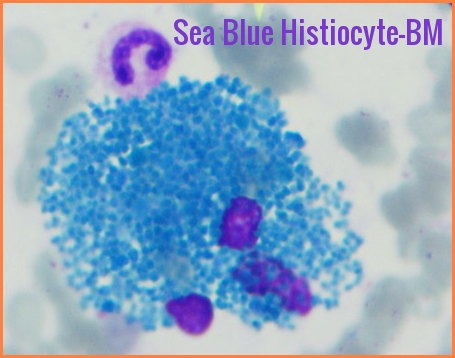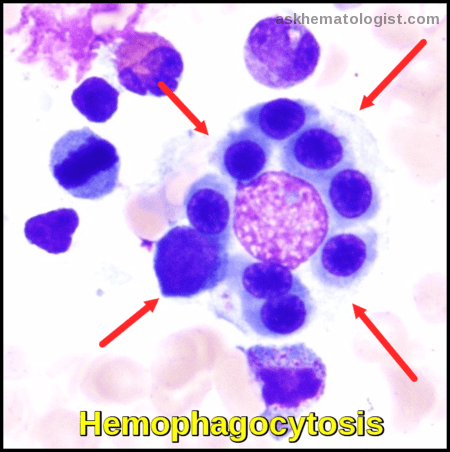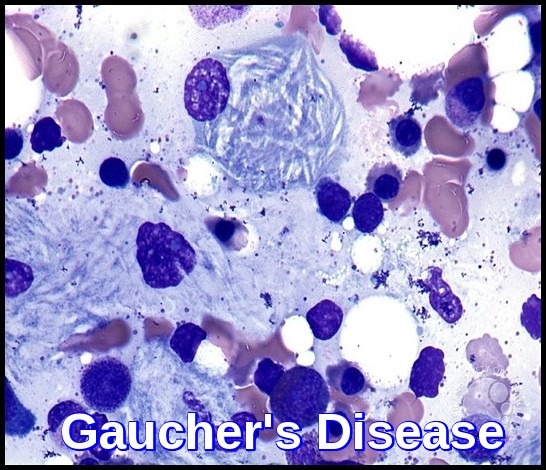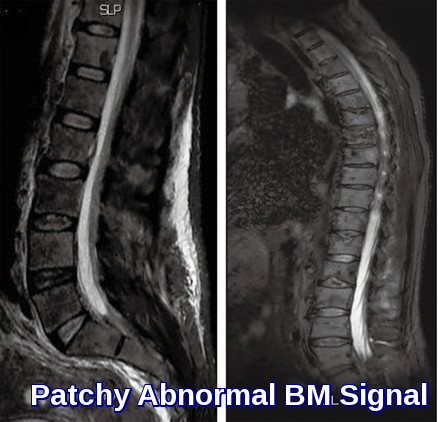Sea Blue Histiocytes
Sea Blue Histiocytes are large lipid-containing histiocytes in the bone marrow which stain sea blue in color.
They may be found in a rare autosomal dominant condition characterized by neurological impairment and splenomegaly.
Sea-blue–colored histiocytes have been described in the setting of high rates of intramedullary cell death due to lipid storage diseases (e.g. Niemann-Pick disease), myelodysplastic syndromes (MDS), lymphomas, chronic myeloid leukemia, idiopathic thrombocytopenic purpura, autoimmune neutropenia, total parenteral nutrition and β-thalassemia major.
Sea-blue histiocytes are a common cytological feature in the bone marrow of patients with MDS. As other disorders frequently associated with marrow sea-blue histiocytes are relatively rare, MDS is probably the most common cause of this phenomenon in a northern European population.
The occasional sea-blue histiocyte may be a normal finding.
Sea Blue Histiocytosis (also known as inherited lipemic splenomegaly) is an extremely rare clinical syndrome associated with hypertriglyceridemia, splenomegaly, mild thrombocytopenia and bone marrow involvement. It is one of a group of related lipid disorders caused by certain changes in the APOE gene. Many reports using the term “syndrome” are actually reporting just a microscopic finding.
There are currently no formal treatment guidelines. Management may involve the coordinated care of several different specialists including cardiologists, gastroenterologists, and hematologists. Patients with splenomegaly should be careful to avoid contact sports. Removal of the spleen (splenectomy) has been reported to make the condition worse.









